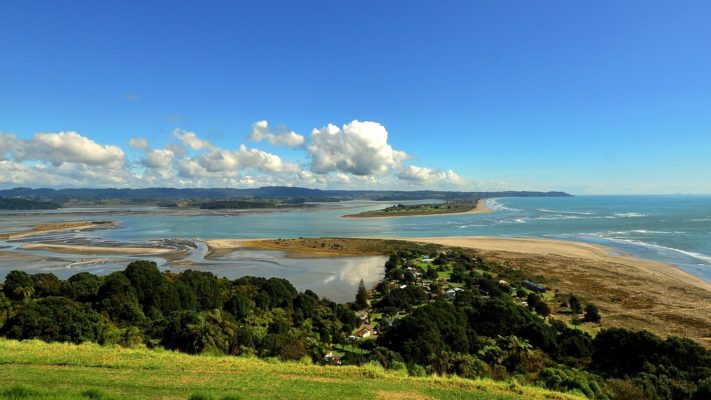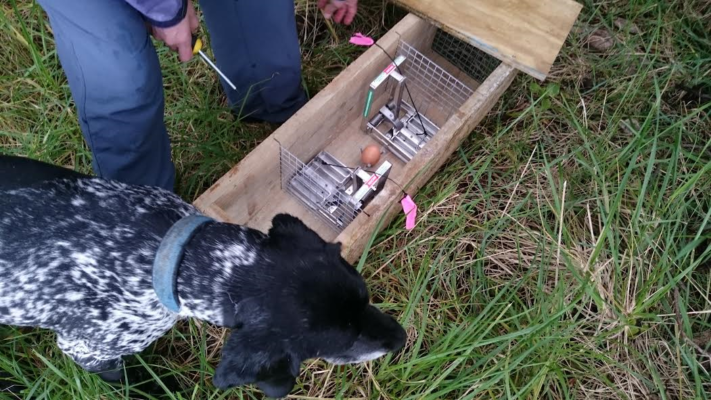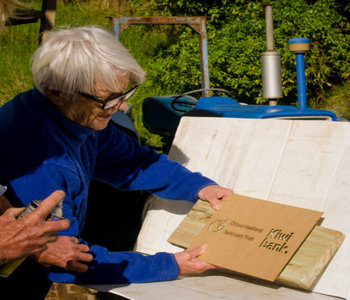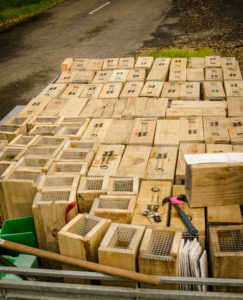When Ōhiwa resident Andrew Glaser pitched the concept of a management group to coordinate protection efforts on and around the Ōhiwa Headland, the community immediately liked the idea. Andrew found out just how much they liked the idea not long afterwards, when he was walking his dog one evening.

The conversation went something like this:
(voice out of darkness): “Andrew I want to buy 100 DOC 200 traps.”
Andrew: “Great, but do you know how much 100 traps would cost?” (For the record, it was $21,000!)
“Yes – I want to contribute!”
That was just 18 months ago. After that very significant donation, a Trust was setup to manage the fund and the work of the Ōhiwa Headland Sanctuary Trust began.
“Locals know the value of the area,” says Andrew. “It’s a rich, diverse area with wetlands, coastal habitat and rich vegetation. It’s got it all – fernbirds, banded rail and bitterns in the wetland area as well as shorebirds like New Zealand dotterels and variable oystercatchers and migratory waders in Ōhiwa harbour. Within the forested areas are tui, the odd bellbird and a substantial population of North Island weka. There’s a remnant kiwi population, kaka and a lot of kereru. I saw a flock of 20 the other day!”
Seabirds are also returning to the area.

“We’ve started seeing grey-faced petrels re-colonise this point over the last few years. We’ve found over 27 burrows and they are one of the main reasons for having a wider predator control buffer,” says Andrew.
Then there’s the Headland itself, which, being surrounded by estuaries and the sea offers a defensible area for predator control.
“Early Maori had a settlement here too and recognised it as a special place and a food basket for their community,” he says. “It was also recognised as a prominent point and defendable Pa’s were created here just as we want to create a defendable barrier from introduced predators for our native birds now.
The Ōhiwa Headland Sanctuary Trust carries out predator control and restoration work over an area of 400 hectares and has had huge support from their small, local community.
“The community is absolutely amazing!” Andrew says. “They’re right into it. They have a real connection with conservation.”
That support came in handy when the Trust applied for a Kiwibank Predator Free grant and submitted their video for online voting.
“The Ōhiwa Headland Sanctuary got 1001 votes – the most votes for the competition. There’s a real passion in the community and also in visitors to the holiday park.”

Over 1000 votes is pretty impressive – especially when you consider that there are only about 140 households in Ōhiwa and only about a third of those are permanent residents.
A couple of canine recruits helped drum up support too.
“We have two Conservation Dogs as ambassadors. When we made a video post about them it got an incredible following.”
Community support is also very hands-on. When there’s a community work-day, locals turn out in numbers to give a hand.
“As an example of the commitment and interest, when we started trap-box making with our Kiwibank grant, 24 volunteers turned up to make 150 trap boxes in 8 hours!”
Volunteers have also been trapping in their backyards and holiday homes.

“We’re down to pretty low rat densities now,” Andrew says, “with 217 rats caught on the Headland since the Trust’s inception, along with 13 weasels and 6 stoats. The community has also caught 204 possums, 19 hedgehogs, 29 mice and 20 rabbits. We’re not just into trapping predators – we want to be “pest free” so we’re trying to get rid of them all!”
The Trust has recently started a new schools initiative, we’re taking trapping into two local schools,” Andrew explains, “Waiotahe School and Kutarere School. Each school will be given 10 traps that were purchased as part of the Kiwibank Predator Free grant, to manage the rats in their schoolyard.”
The local Ōhiwa Beach Holiday Park is also part of a nation-wide Predator Free Holiday Parks initiative and takes responsibility for checking traps around the Holiday Park.
“It’s a great way for visiting people to see the value of being Predator Free and what it can mean for this area,” says Andrew. “The Ōhiwa Headland Sanctuary isn’t just for birds. It’s also for people to enjoy. It’s a beautiful place.”

